Road Trip: Yellowstone
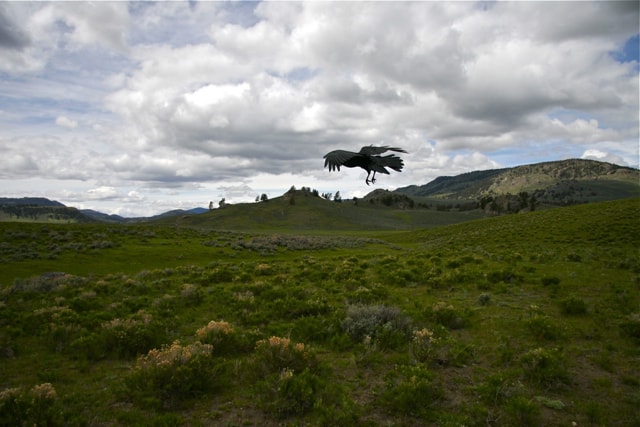
As much as we love North Cascadian landscapes, we here at the Institute are still called to visit and experience other amazing places on our planet. We publish accounts of the places Institute staff and graduate students visit in our Road Trip series.
About this time last year, summer solstice, with its long days filled with light and birdsong, I left Bellingham and headed out on a pilgrimage to Yellowstone and Grand Tetons national parks. It is a tradition of mine to spend some portion of my summer out there in the glory of western Wyoming. Having lived for a few years as a snowboard bum/river rat in Jackson Hole in the late 1990s, I have tasted the ineffable sweetness of summertime in the Tetons and the surrounding Greater Yellowstone Ecosystem. Once you sip that nectar, it is impossible not to go back for more whenever possible.
This particular road trip with two good friends, one from Portland, another from San Francisco, started with a visit to Yellowstone’s northeastern Lamar Valley, an area of the park renowned for wildlife viewing opportunities and a more remote feeling than other popular attractions like Old Faithful or the springs at Mammoth. We spent two nights at the lovely Lamar Field Station in the heart of the valley, a rustic outpost that is operated by the Yellowstone Association as accommodations for many of their field excursions.
 Approaching the Yellowstone Association’s Lamar Field Station
Approaching the Yellowstone Association’s Lamar Field Station
Out the front door of our cabin was a view across the verdant valley in fresh flush, studded with silhouettes of hundreds of bison grazing with their young. Out the back door, a trail followed a creek back to Druid Peak, the famed mountain where Interior Secretary Bruce Babbitt let loose Canadian wolves in 1995 to reintroduce this vital carnivore to the ecosystem. It felt like a holy place, this ground where our culture made an attempt to right a wrong from the past, where the food chain thrives in all of its perfect, intact elegance.
Over the course of several days, we woke early and stayed out late, trying to take in as much wildlife as we could. June is a rich month to visit Yellowstone as most creatures are tending to offspring and the cycles of birth and death are in plain sight, with predators like wolves, coyotes and black and brown bears taking down newborn bison, elk, deer and antelope to feed their own young. In all of my travels around the West, I have never seen a place so vivid and fecund with wildlife, from migrating birds to “charismatic megafauna.”
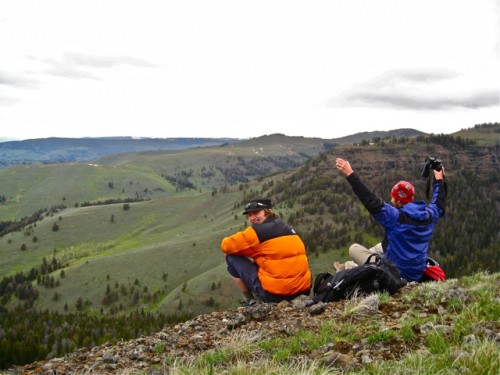 Taking in the view from the top of Druid Peak
Taking in the view from the top of Druid Peak
When we roamed off the beaten track, everywhere we stepped were tracks, skat, bones, antlers — prehistoric signs of the ancient dance that has taken place here long before anything like a “national park” or “Wyoming” existed. It was an honor to be there in the house of grizzly, raven, trout, pronghorn, wolf and woodpecker, and the Lamar Field Station is perfectly situated to immerse you in the wild communities of the valley with minimal interference.
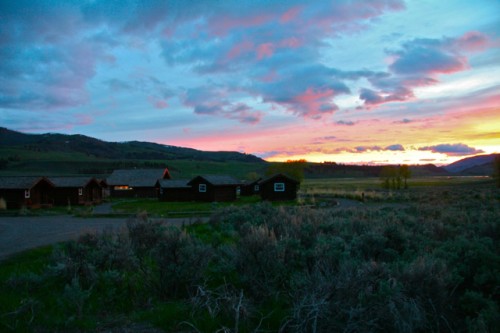 The Yellowstone Association’s Lamar Field Station at sunset
The Yellowstone Association’s Lamar Field Station at sunset
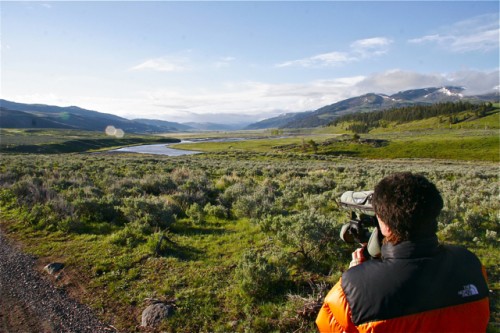
(I’ll never forget spending a morning watching a large herd of bison swim cross the Lamar River, swollen with snowmelt, and following the ill-fated attempts of one newborn calf struggling against the currents. After three failed attempts, it climbed out shivering on the wrong side of the river, where it was promptly joined by a curious — likely hungry — coyote and raven. We watched the hillside, waiting for wolves or a bear to descend on this easy meal, but never learned what happened to the abandoned calf after he slipped out of sight in to a grove of aspen trees.)
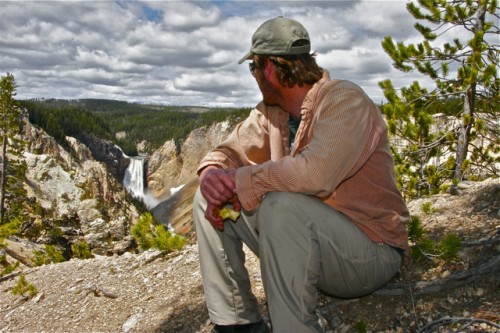
Later, my friends and I reluctantly drove on and spent a day taking in a few of the sights like Yellowstone Canyon, Falls and Lake. RVs and throngs of camera-toting, souvenier-shopping homo sapiens of all nationalities crowded in and we didn’t last much longer in the park, as spectacular as the scenery was. We drove south, took a dirt road of the Rockefeller Parkway, waded across an icy stream and spent the afternoon soaking in some semi-secret hot springs we knew of, rare pools in the Yellowstone caldera that are “cool” enough for humans to soak in, unlike the vast majority of boiling mudpots, geysers and fumaroles in the area. Our soaks were accompanied by the sounds of grumbling thunder in the distance and the otherworldly cries of a sandhill crane somewhere in the foreground meadows. A natural symphony played to perfection!
In the evening light, sitting on the banks of a river and reveling in all of our good fortune so far, we observed a flock of white pelicans silently glide up the waterway in tight formation, like an apparition of winged ghosts. They landed upstream and floated down past us, stretching out necks and wings in some kind of synchronized dance. Were they fishing, or grooming for sleep, or something else entirely? After they had floated past us, they lifted up, flew upstream again, landed and repeated their strange performance. And then again, and again, and again.
It was just another quiet blessing in Yellowstone country, a vision that seemed both otherworldly and completely, perfectly of this world.
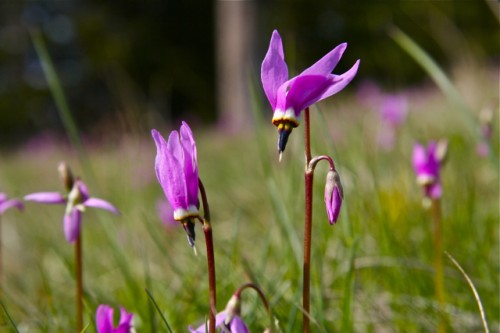 Shooting stars in the Absarokas
Shooting stars in the Absarokas
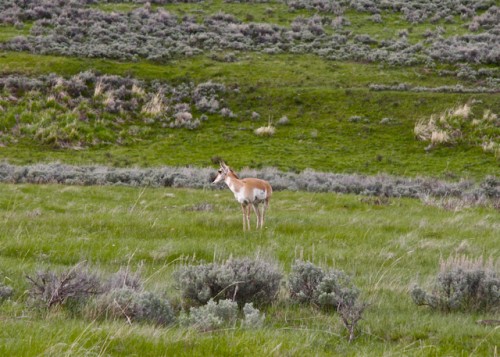 Pronghorn antelope in the Lamar Valley
Pronghorn antelope in the Lamar Valley
All photos by Christian Martin.


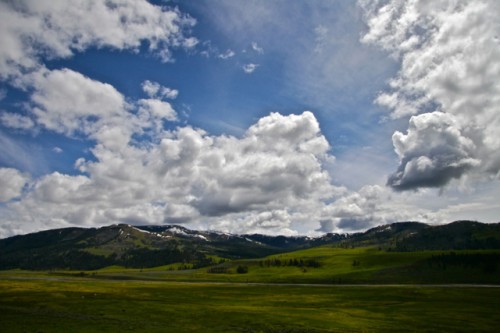
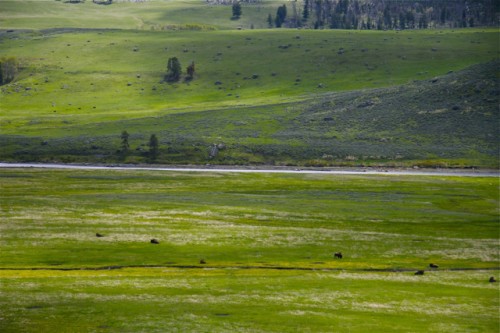
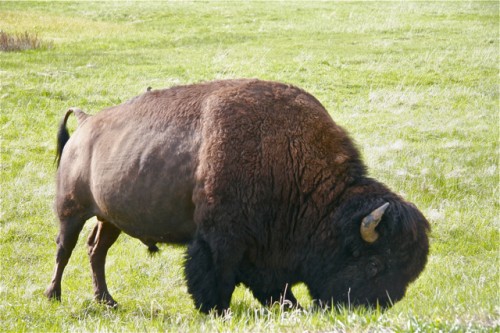
oh your photographs are so beautiful !!
I absolutely second Vida’s comment. Your photos are astounding Christian ~ Please teach me how to take photos as you do! I hope you are well!